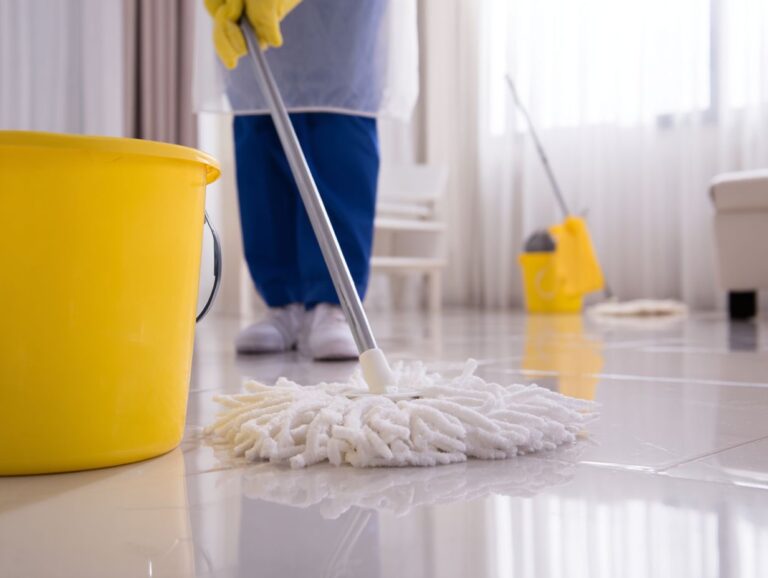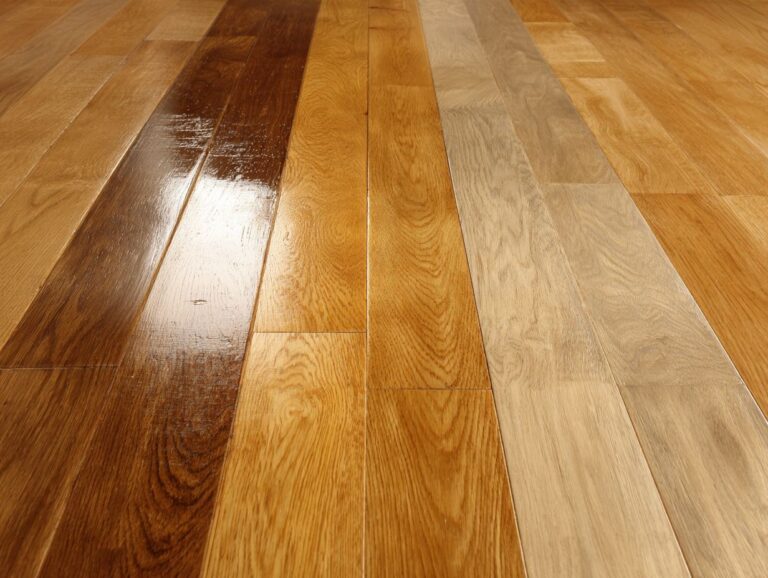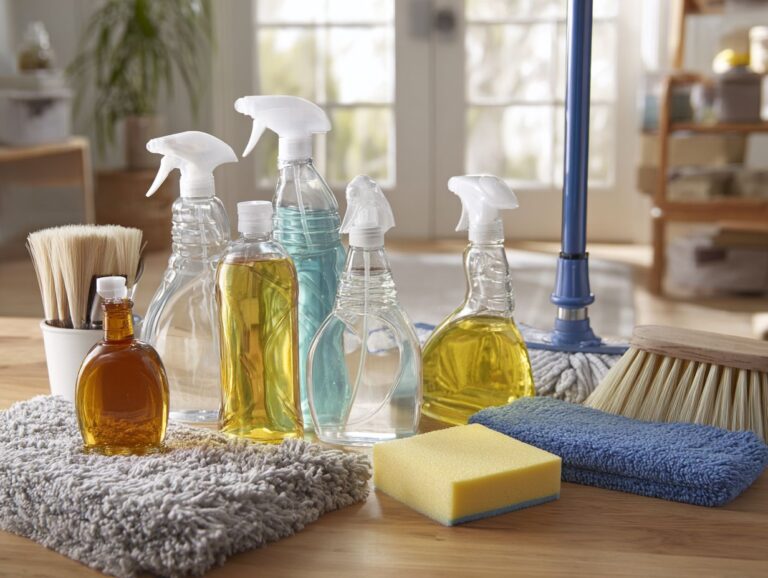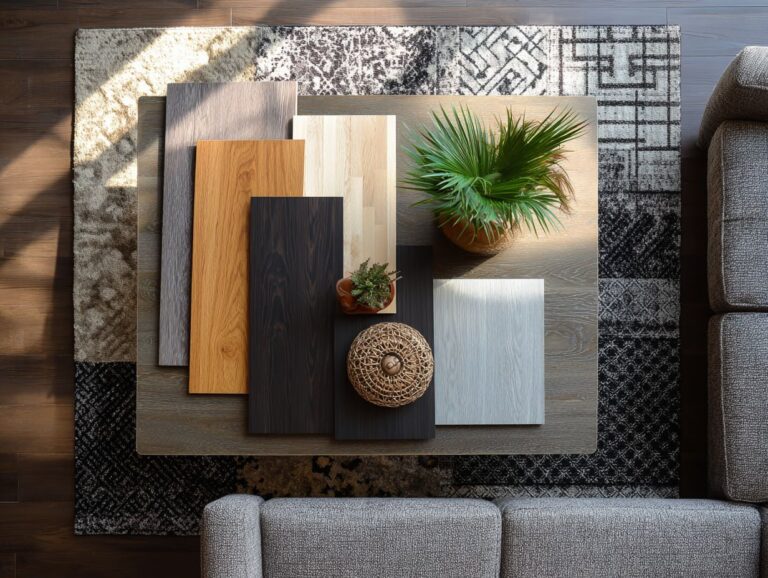Limestone and Sandstone Flooring – Natural Beauty Guide
Improve your home’s appearance with limestone and sandstone flooring, two attractive natural stone options made from sedimentary rock. In this guide, Jon examines the special makeup and features of these materials to help you choose the right one for your area. Learn about their beauty, strength, and care requirements so you can choose the best flooring that adds to your home’s appeal and lasts a long time.
Key Takeaways:
Contents
- Characteristics of Limestone Flooring
- Characteristics of Sandstone Flooring
- Comparative Analysis: Limestone vs. Sandstone
- Limestone and Sandstone Flooring Data
- Design Ideas for Limestone and Sandstone Flooring
- Installation Process
- Care and Maintenance Tips
- Frequently Asked Questions
- What is the difference between limestone and sandstone flooring?
- Why should I choose limestone or sandstone flooring for my home?
- How do I properly care for limestone and sandstone flooring?
- Can limestone and sandstone flooring be used in high-traffic areas?
- Are there any design considerations when choosing limestone and sandstone flooring?
- Are there any environmental benefits to choosing limestone and sandstone flooring?
Overview of Natural Stone Flooring
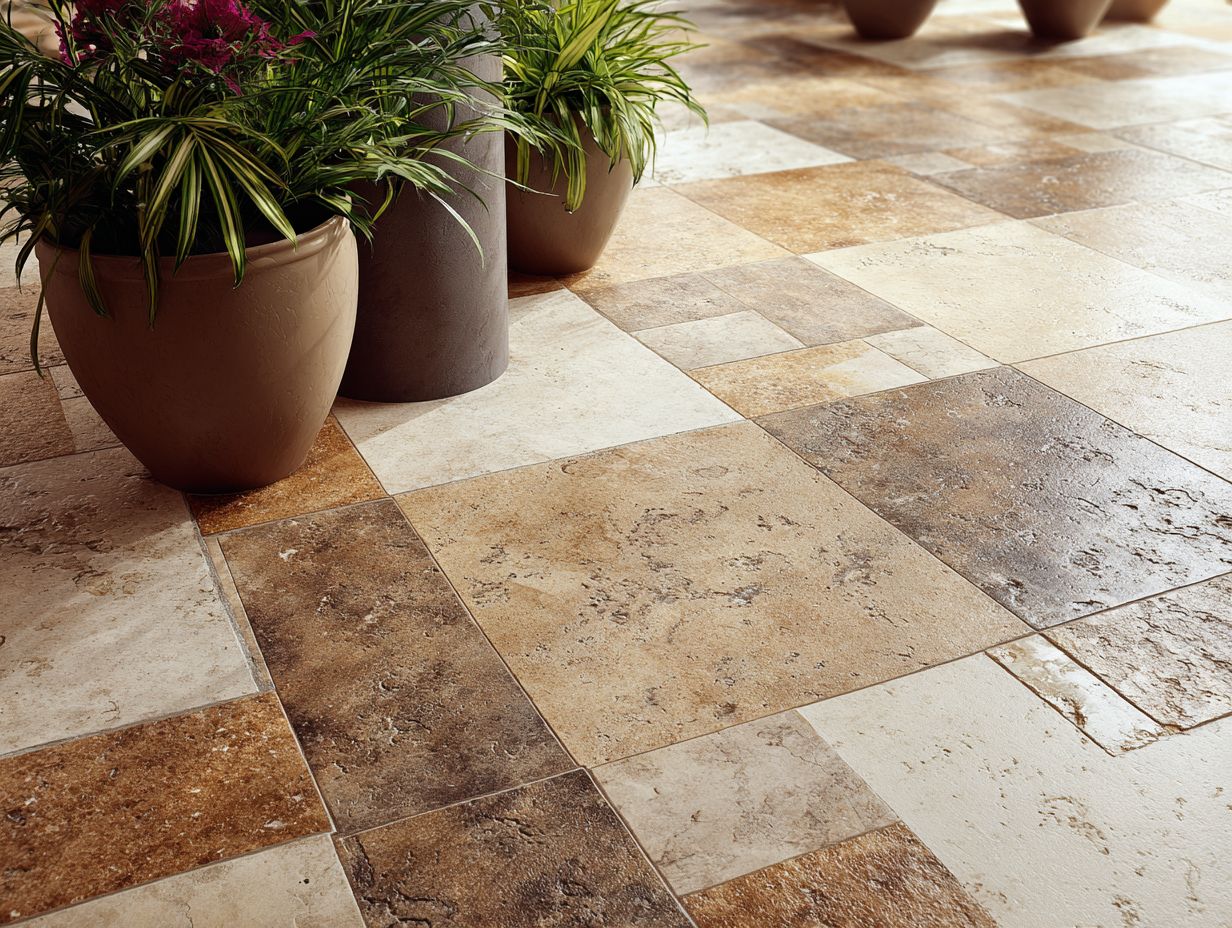
Natural stone flooring encompasses a variety of materials, including limestone and sandstone, each offering distinct characteristics for residential and commercial spaces.
Limestone is prized for its durability and good looks, making it perfect for high-traffic areas. Sandstone, with its warm colors, improves the look of gardens and patios.
For restoration projects, both materials offer a classic look. Sandstone is widely liked because it stays non-slippery even when wet.
When choosing between them, consider where you’ll use them: limestone works well indoors and in dry areas, while sandstone is great for outdoor use and wet places, making it good for gardens and building projects.
Importance of Choosing the Right Material
Choosing the right flooring material is important because it affects how long it lasts, how easy it is to care for, and how a room looks.
When comparing limestone and sandstone, consider their unique characteristics.
Limestone has soft colors that create a warm and inviting space. It can be more susceptible to staining and requires regular sealing.
However, sandstone is generally more durable and resists weathering better, making it a good choice for high-traffic areas. Maintenance is easier, but its porous nature can trap dirt, necessitating thorough cleaning.
Your decision should be based on what your area needs and how much maintenance you can handle.
Characteristics of Limestone Flooring
Limestone flooring is famous for its beauty and unique qualities, making it a popular choice for both indoor and outdoor areas. If interested in exploring other flooring options, you might appreciate our insights on vinyl flooring patterns, which offer a versatile alternative with various aesthetic choices.
Physical Properties
Limestone primarily consists of calcium carbonate, which contributes to its distinct physical properties and behavior under various environmental conditions.
This makeup results in limestone having a hardness level of about 3 on the Mohs scale, which means it can be affected by weather conditions. Unlike sandstone, which can be stronger because it contains quartz, limestone usually wears away faster in acidic environments, like those caused by rainwater.
To mitigate this, applying a sealant can protect limestone surfaces, prolonging their lifespan. Regular maintenance, including cleaning with pH-neutral solutions, also helps to preserve its structural integrity against wear and environmental factors.
Aesthetic Appeal
Limestone has different natural colors and patterns, offering a stylish look for both indoor and outdoor areas.
The color variations include shades like creamy beige, soft gray, and deep brown, each lending a unique character to the space.
For example, a light beige limestone can impart a warm, inviting atmosphere in a foyer, while darker tones add drama and elegance when used in a fireplace surround.
Surface finishes like honed, polished, or brushed are very important. A honed finish provides a matte look ideal for rustic settings, whereas polished limestone maximizes light reflection, suitable for modern aesthetics.
Choose based on the desired ambiance.
Durability and Maintenance
Known for its durability, limestone requires appropriate maintenance to preserve its beauty and structural integrity over time.
Regular cleaning is essential; use a pH-balanced stone cleaner to avoid damaging the surface.
Use a quality stone sealer on limestone every 6 to 12 months. Each application costs about $50-$100.
For deeper scratches or stains, consider professional restoration services, typically ranging from $2 to $5 per square foot.
Implement preventive measures by placing mats at entryways to reduce dirt accumulation and using coasters under heavy objects.
Doing regular upkeep makes your flooring last longer and keeps it looking good naturally.
Characteristics of Sandstone Flooring
Sandstone flooring is known for its natural look and distinct textures, which makes it a favored option for many uses.
Physical Properties
Sandstone’s composition often includes fossil fragments and organic debris, resulting in a variety of physical properties that influence its use.
These unique characteristics make sandstone particularly suitable for various applications. For instance, its density often ranges from 2.0 to 2.8 g/cm, providing a balance between strength and weight-ideal for construction.
Sandstone exhibits a porosity of 5-30%, allowing it to hold water and be used in landscaping and aquifer projects. In comparison, limestone is typically denser and less porous, which helps it resist weathering but limits its use in water-related applications.
Knowing these differences is important when choosing materials for particular environments.
Aesthetic Appeal
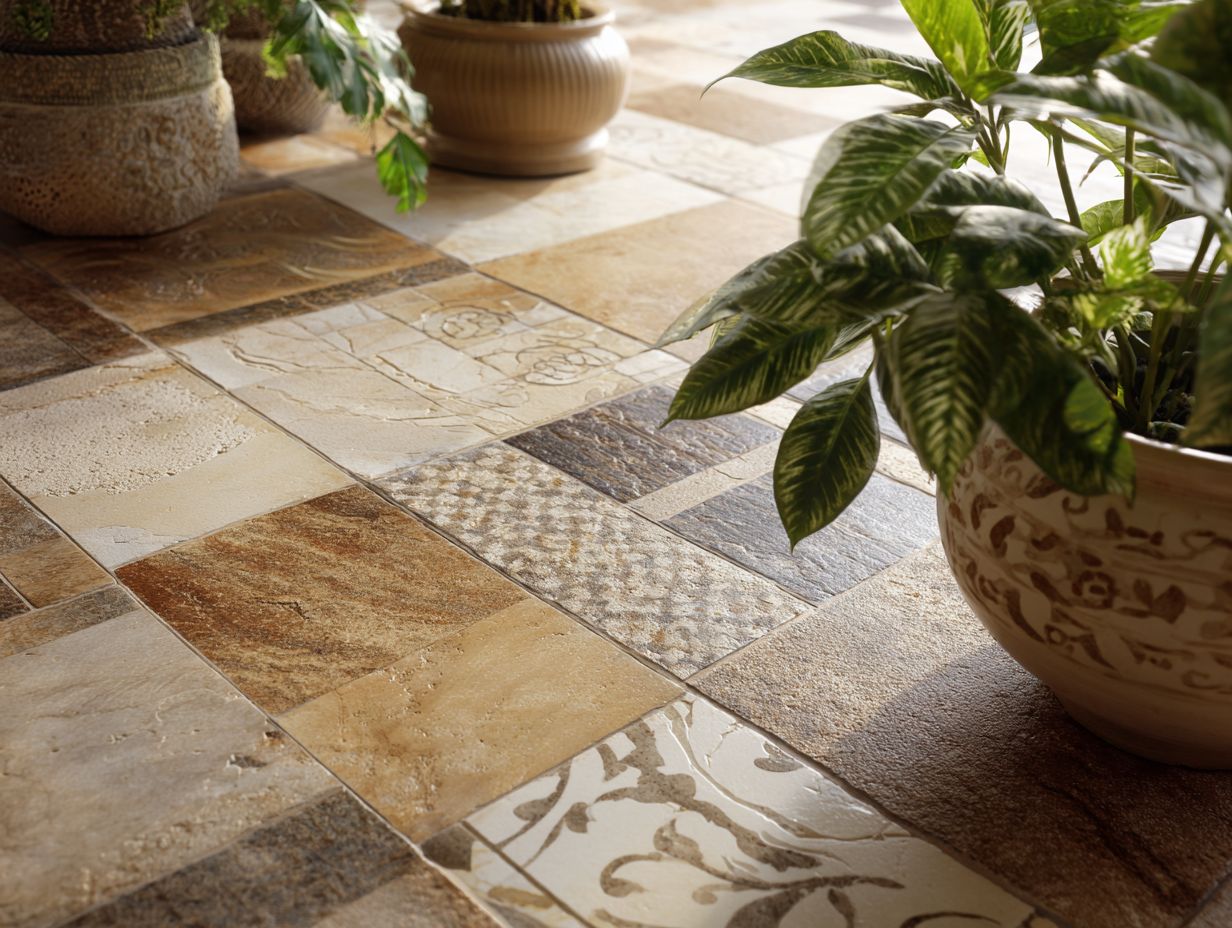
Sandstone, with its natural colors and textures, adds a rustic appeal to both classic and modern styles.
Sandstone is available in a range of colors, from warm beige to rich reds and soft greys. The natural variations make each piece one-of-a-kind, ideal for striking walls or outside patios.
For interior applications, consider honed finishes for a smooth, modern look or a textured finish to emphasize its natural character. Popular design applications include:
- Countertops
- Fireplaces
- Garden pathways
where its durability and aesthetic appeal shine. To choose the right type, think about your overall design scheme and how sandstone’s unique qualities can complement your space.
Durability and Maintenance
Sandstone’s durability makes it suitable for high-traffic areas, but it requires specific maintenance techniques to retain its visual appeal.
-
To maintain sandstone flooring, clean it biweekly using a pH-neutral cleaner like StoneTech or a simple mixture of warm water and mild soap.
-
To maintain your surfaces, consider having a professional put on a sealant every 1-3 years. The price is typically between $0.50 and $2 per square foot, based on the product chosen.
-
If you get stains, try using a poultice. Combine baking soda with water to create a paste, apply it to the stain, leave it for a while, then wash it off.
-
Regularly sweeping and mopping helps curb dirt buildup, preserving the stone’s natural beauty.
Comparative Analysis: Limestone vs. Sandstone
Knowing the differences between limestone and sandstone flooring helps consumers choose wisely for their projects.
Limestone and Sandstone Flooring Data
Limestone and Sandstone Flooring Data
Flooring Availability and Features: Limestone Flooring
Flooring Availability and Features: Coretec Tile
Flooring Availability and Features: Product Specifications
The Limestone and Sandstone Flooring Data gives a detailed view of flooring features and specifications, showing the wide range of choices available in the market. This data is important for consumers and industry experts looking for long-lasting, attractive flooring options.
Flooring Availability and Features focus first on Limestone Flooring, where 75% of inventory has a honed finish. This matte finish is well-liked for its polished look, making it a good choice for indoor areas with a stylish design. Conversely, 25% of the inventory features a bush hammered finish This item has a rough surface, making it perfect for outdoor use where preventing slips is important.
- Coretec Tile: Impressively, 100% of installed floors come with integrated grout, ensuring seamless installation and a polished finish. Furthermore, these floors boast waterproof, kidproof, and petproof features, highlighting their suitability for high-traffic areas prone to spills and wear, such as kitchens and family rooms.
In terms of Product Specifications, the tiles have a wear layer thickness of 20.0 “, showing a strong surface that can handle lots of foot traffic and last a long time.” Each carton covers an installed square footage of 28.03, allowing for efficient coverage of space, minimizing installation time, and material waste.
This detailed Limestone and Sandstone Flooring Data Highlights the importance of finish types, built-in features, and product strength when choosing flooring. The information helps in choosing flooring that looks good and serves its purpose. Whether choosing the smooth honed limestone or the durable Coretec tile, this advice helps buyers make the best flooring decisions for different settings.
Cost Considerations
On average, limestone flooring costs between $5 to $15 per square foot, while sandstone typically ranges from $3 to $12 per square foot.
Additional costs should be considered when selecting the right flooring. Installation fees can vary by region, with professionals charging between $3 to $7 per square foot.
Sourcing materials locally may reduce transportation costs. For example, if you live near a limestone quarry, you might save up to 20% on material costs.
Consider ongoing expenses such as upkeep; limestone must be sealed every few years, which adds about $1-$2 per square foot annually, while sandstone is more durable and needs less upkeep.
Installation Differences
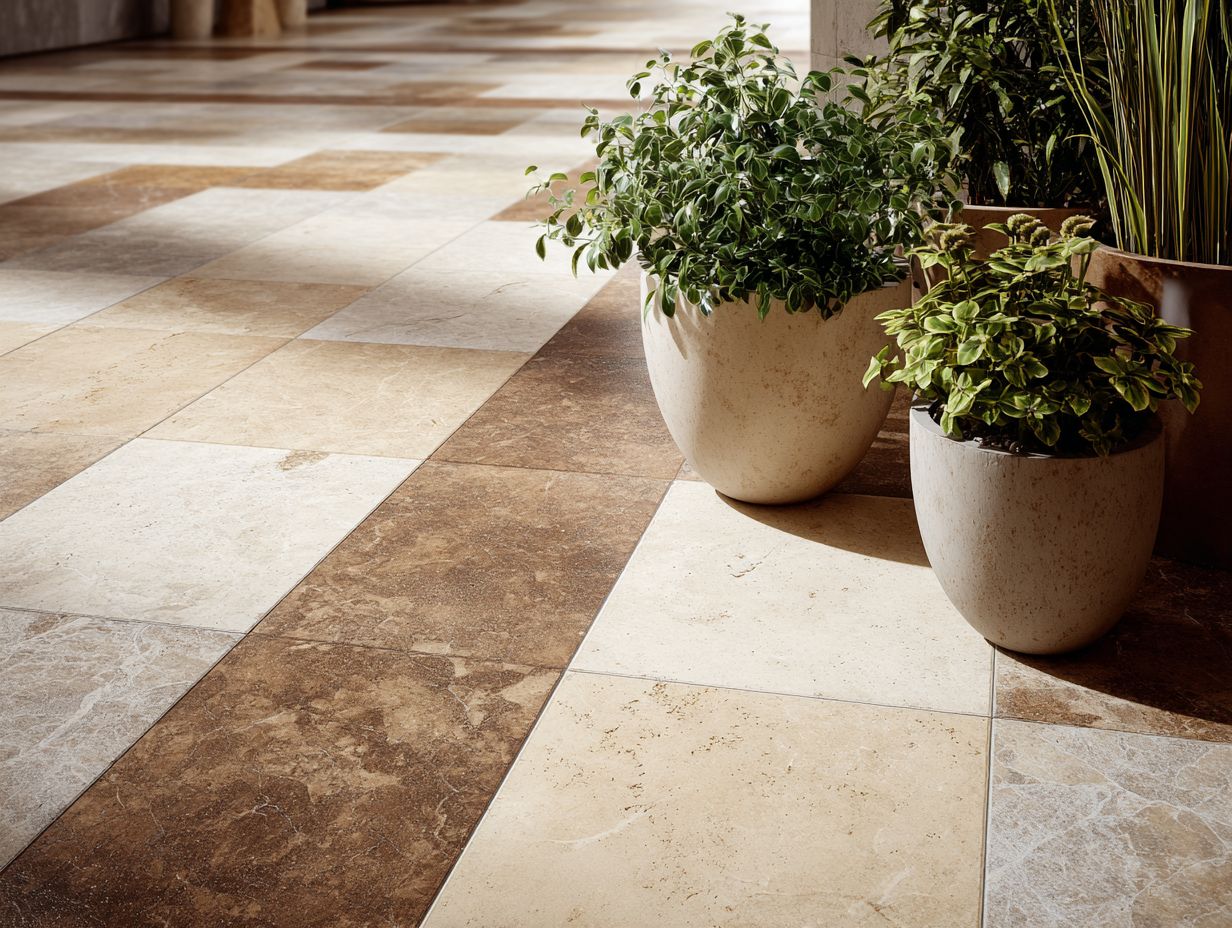
Installing limestone often needs certain tools and methods, unlike the simpler process of installing sandstone.
Putting in limestone usually requires specific tools like a tile saw to cut accurately and spacers to keep the gaps even, providing room for expansion.
You’ll also need a wet saw for cleaner cuts on the dense material, whereas sandstone, being softer, may only require a standard tile cutter.
Installation duration can vary; expect limestone to take 3-5 days for a complete job, factoring in curing time, while sandstone might wrap up within 2-3 days.
Consider hiring professionals if you’re unsure about the water drainage and sealing processes essential for limestone durability.
Environmental Impact
Both limestone and sandstone are derived from natural resources, but their extraction and processing can have different environmental implications.
Limestone is commonly extracted using surface mining, which can harm nearby ecosystems. In contrast, sandstone extraction typically involves less invasive techniques, reducing habitat destruction.
To minimize transportation impacts, consider sourcing limestone locally; studies show that transporting it just 100 miles can cut emissions by up to 20%. Eco-friendly practices, such as using electric machinery and implementing water recycling systems, can further lower the carbon footprint.
Evaluate your sourcing choices by balancing material needs with environmental considerations to promote sustainability in your projects.
Design Ideas for Limestone and Sandstone Flooring
Limestone and sandstone provide limitless design options, from a timeless look to a contemporary style, fitting for different areas.
Classic and Contemporary Styles
Limestone and sandstone can be shaped to match traditional or modern design styles, improving any building project.
For classic themes, limestone’s warm, earthy tones work beautifully in traditional homes, available in honed or polished finishes. In contrast, sandstone, with its unique textures and colors, adds a rustic charm, often showcased in outdoor patios or garden pathways.
For contemporary designs, sleek, large-format tiles made from limestone create a clean, modern look, while lighter sandstone shades can brighten spaces, complementing minimalist aesthetics.
Real-life applications can be seen in upscale residences featuring open-concept living areas, where both materials can create divisions yet maintain a cohesive look.
Color and Texture Combinations
Mixing different colors and textures can improve the look and usability of limestone and sandstone floors.
For limestone, pairing it with earthy tones like terracotta and deep forest green creates a warm, inviting palette that complements its natural texture. Consider adding a brushed brass accent for a touch of elegance.
In contrast, sandstone, with its lighter hues, works well with soft blues and grays, evoking a coastal vibe.
For an eye-catching design, opt for a matte finish on walls while using a glossy sealant on the flooring. The contrast shows the distinct patterns in the stone and makes it strong and easy to care for.
Patterns and Layouts
New patterns and layouts can change a space, highlighting the special features of limestone and sandstone flooring.
Think about the herringbone pattern, which makes an eye-catching and lively look. For DIY enthusiasts, begin by measuring your space and purchasing sufficient tiles, ensuring they are well-suited for either limestone or sandstone.
Alternatively, a grid pattern offers a more traditional look and is easier to install. Use tile spacers to maintain even gaps, and opt for a flexible adhesive specifically designed for natural stone.
As you plan your installation, remember to account for natural variations in stone color, allowing for an eye-catching end result.
Installation Process
Installing limestone and sandstone floors properly is important for their lasting quality and how they look. It requires careful planning and accurate execution.
Preparation and Planning
Successful installation begins with thorough preparation and planning, including assessing the site and choosing appropriate materials.
- First, measure the space with a measuring tape to get the exact dimensions.
- Next, mark the layout with chalk lines to visualize where installations will occur.
- Choose materials based on the local climate and your specific project needs. For instance, if you’re building a deck, treated lumber or composite boards may be ideal for durability.
- Tools for preparation include a level for ensuring even surfaces and a circular saw for cutting materials.
This method will make installing easier later.
Tools and Materials Needed
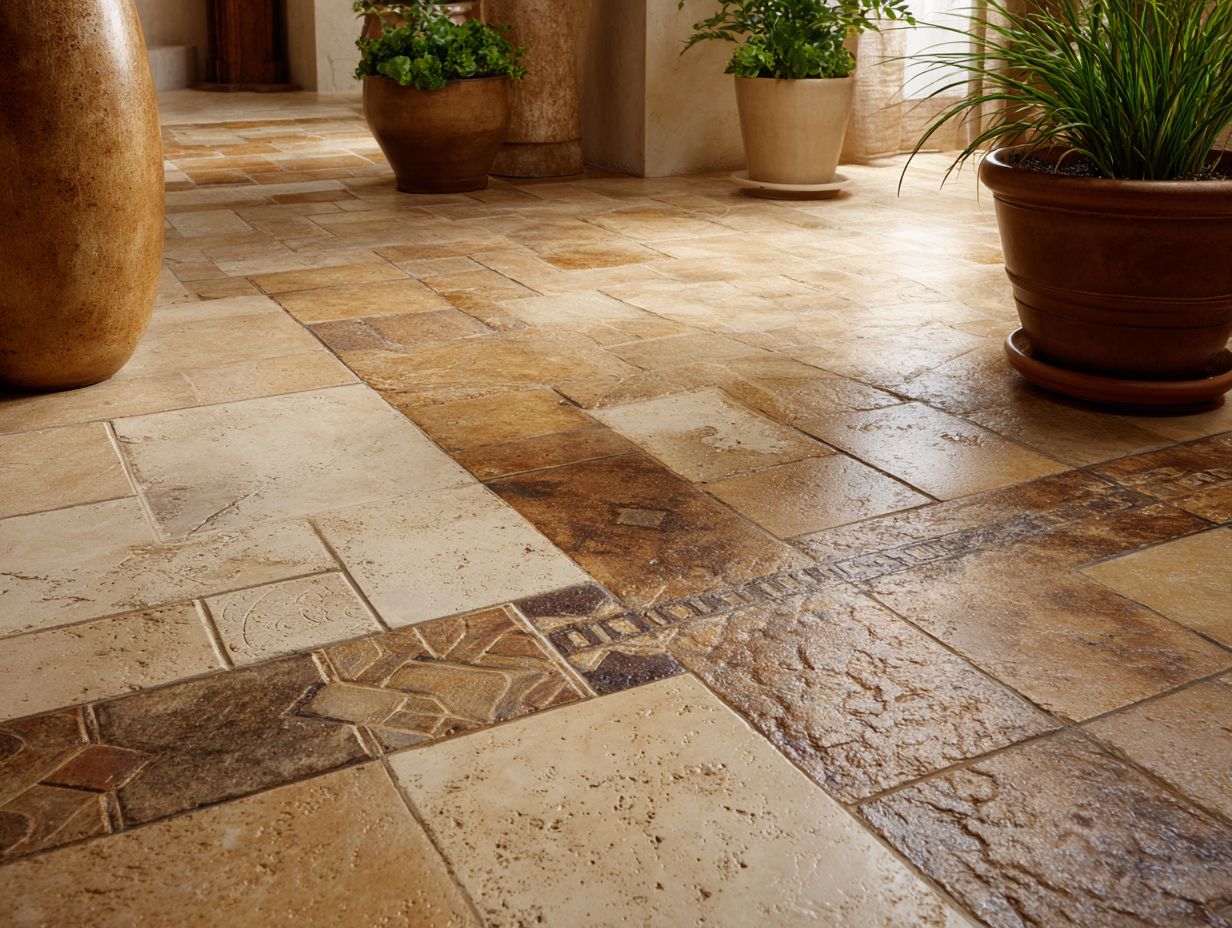
Key tools for installing limestone or sandstone flooring include a tile cutter, spacers, and a trowel, along with necessary materials like mortar and grout.
To install correctly, use a level to check your flooring is even and a rubber mallet to set tiles gently without cracking them.
A bucket for mixing mortar and a utility knife for trimming tiles can also prove beneficial.
When sourcing supplies, visit local home improvement stores such as Home Depot or Lowe’s to find quality materials, or shop online for convenience.
Having the proper tools ready before beginning will make the installation process smoother and result in a finish that looks professional.
Step-by-Step Installation Guide
Follow this easy step-by-step guide to install limestone or sandstone flooring in your home or business successfully.
- Prepare the subfloor by ensuring it is clean, dry, and level. Use a self-leveling compound if needed.
- Cut the tiles: Measure carefully and use a wet saw for clean edges.
- Apply mortar: Spread a thin layer on the subfloor with a notched trowel, ensuring good adhesion.
- Lay tiles: Start from the center, pressing down firmly and using spacers for uniform gaps.
- Grout the tiles: After 24 hours, apply grout to the spaces, wiping off excess.
Avoid common mistakes like skipping the subfloor prep or rushing the mortar drying time.
Care and Maintenance Tips
Looking after limestone and sandstone floors properly keeps them looking good and lasting longer.
Cleaning Techniques
Effective cleaning techniques for limestone and sandstone include using pH-neutral cleaners and avoiding abrasive materials for optimal maintenance.
To maintain the beauty of limestone and sandstone, consider using products like Bona Stone, Tile & Laminate Cleaner for routine cleaning. Apply it with a microfiber cloth to avoid scratching the surface.
It’s advisable to clean these surfaces weekly to prevent build-up. Using area rugs can minimize dirt accumulation in high-traffic areas.
For deeper cleaning, a vinegar-water solution (1:10 ratio) can be used sparingly, but always rinse thoroughly to prevent damage. Putting on a sealant every 1-3 years protects these stones from stains and harm.
Frequently Asked Questions
What is the difference between limestone and sandstone flooring?
Limestone is a sedimentary rock that is made up of calcium carbonate, while sandstone is a sedimentary rock made up of sand-sized grains of minerals. Limestone is usually light in color and has a smoother texture, while sandstone can come in a variety of colors and has a coarser texture.
Why should I choose limestone or sandstone flooring for my home?
Both limestone and sandstone have natural beauty and unique characteristics that make them popular choices for flooring. They are durable, easy to maintain, and can add a touch of elegance and warmth to any space.
How do I properly care for limestone and sandstone flooring?
To keep your limestone and sandstone flooring looking beautiful, it is important to regularly sweep or vacuum to remove dirt and debris. Avoid using harsh chemicals or abrasive tools for cleaning, as these can damage the natural surface of the stone. Instead, use a mild soap and water solution or a specially formulated stone cleaner.
Can limestone and sandstone flooring be used in high-traffic areas?
Yes, limestone and sandstone are both durable and can withstand heavy foot traffic. However, you should seal the flooring to guard it against stains and scratches.
Are there any design considerations when choosing limestone and sandstone flooring?
Limestone and sandstone come in a variety of colors and patterns, so it is important to consider the overall design and aesthetic of your space. Limestone tends to have a more subtle and uniform appearance, while sandstone can have more variation and texture.
Are there any environmental benefits to choosing limestone and sandstone flooring?
Limestone and sandstone are taken from the ground, providing a flooring choice that is eco-friendly and sustainable. They also have a long lifespan, reducing the need for frequent replacements and reducing waste.
